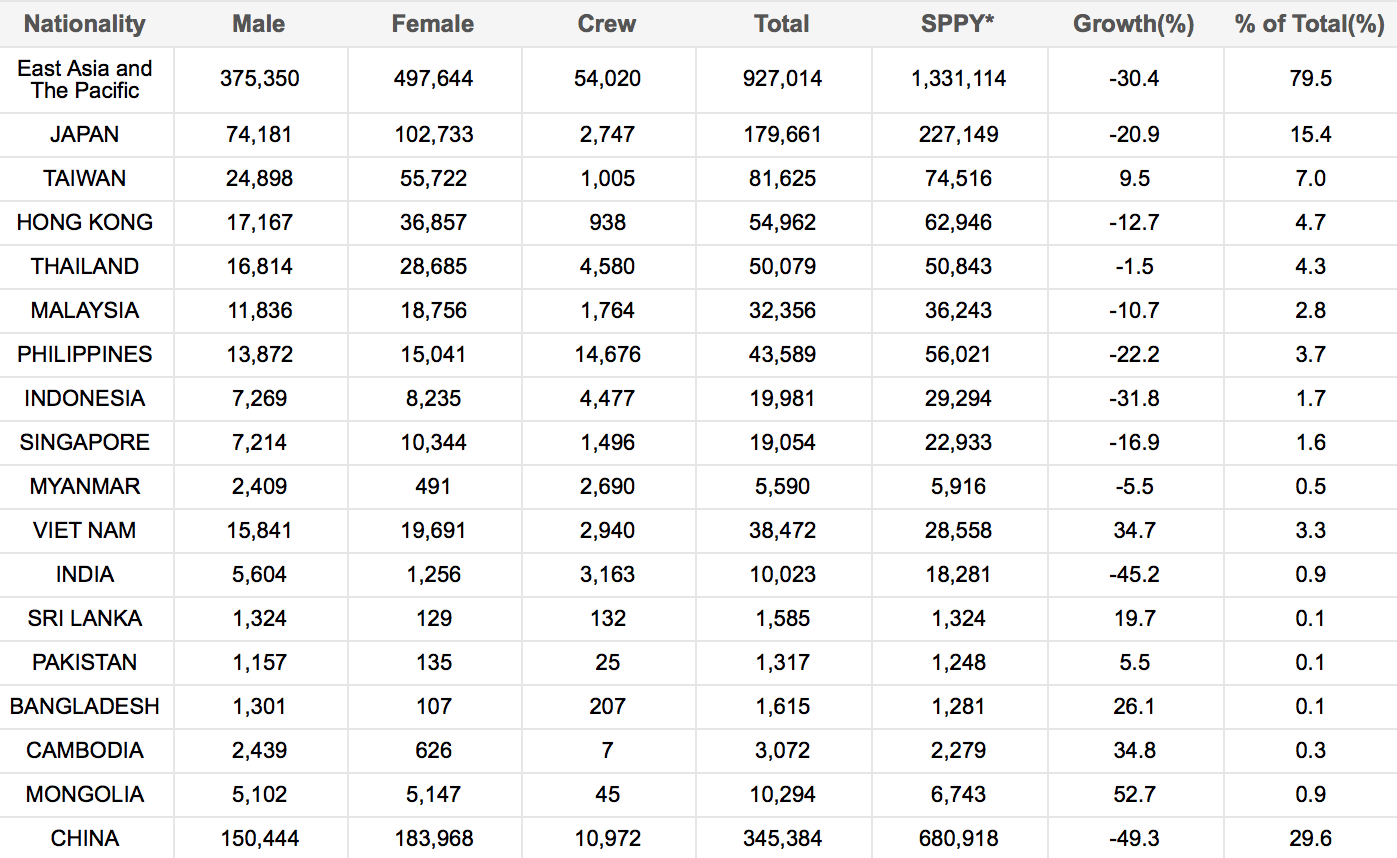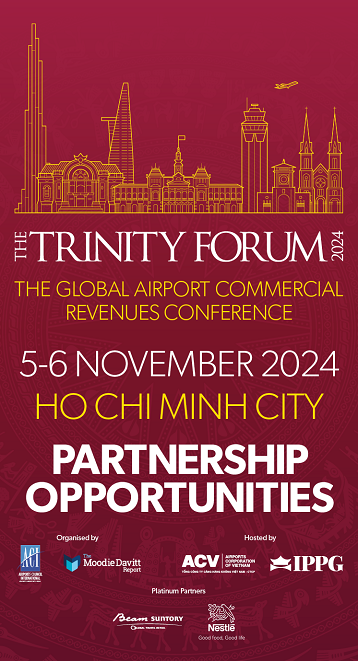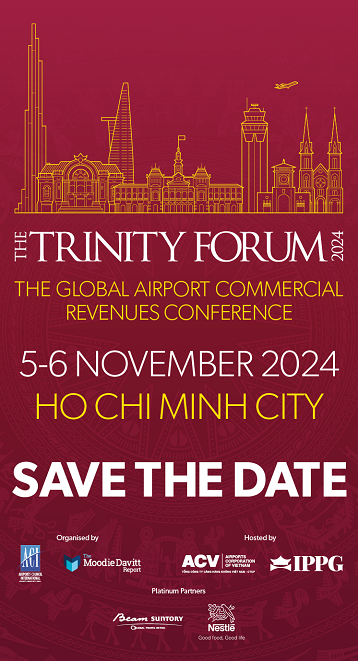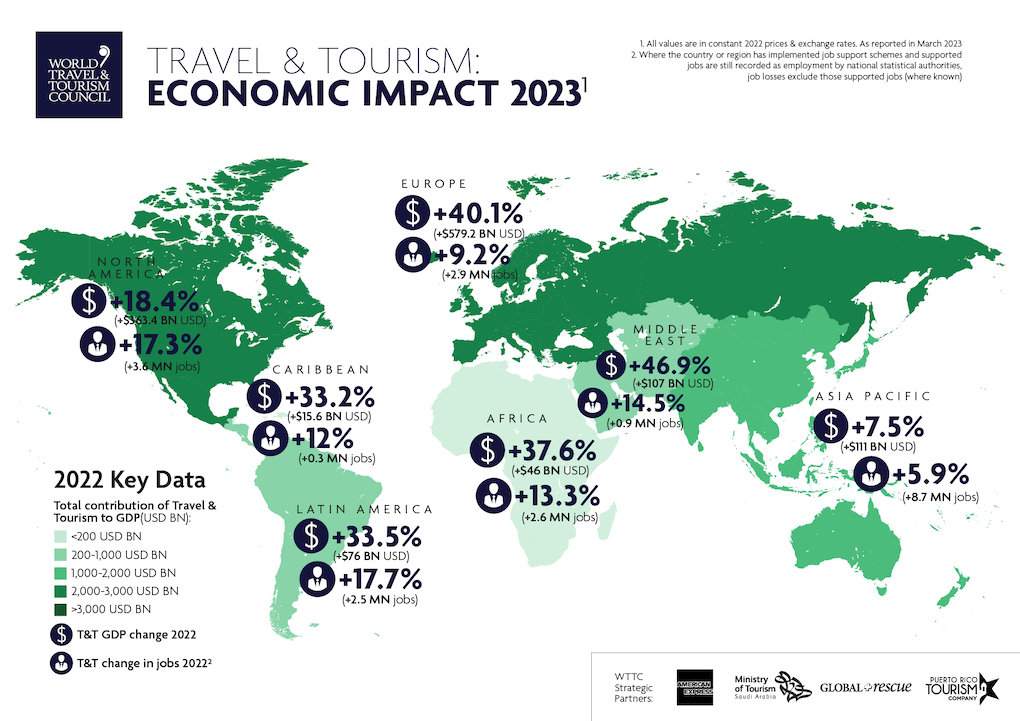SOUTH KOREA. Chinese visitor arrivals to South Korea registered a -49.3% fall to 345,384 year-on-year in October, according to the Korea Tourism Organization’s latest data.
Despite the decline, the results are the best since March this year when China enforced a ban on group tours to South Korea over its deployment of US anti-missile system THAAD.
The dispute, which was apparently resolved at the end of October, saw a collapse in Chinese tourism to South Korea starting with a -40% year-on-year fall in arrivals in March. The situation deteriorated over the following months as Chinese arrivals fell by -66.6%, -64.1%, -66.4%, -69.3%, -61.2% and -56.1% from April through September.
For the first nine months of 2017, Chinese arrivals decreased by -49.6% to 3,192,248; a 32.1% share of total visitors compared with 46.8% for calendar 2016.
Today’s news, confirming widespread media reports that China is easing the ban on group tours, will come as a welcome relief to duty free retailers in the country who have been hard hit by falling Chinese arrivals and spending.

Cautious optimism
Commenting on the positive news regarding group tours, a spokesperson for The Shilla Duty Free told The Moodie Davitt Report: “It is obviously is a good signal for the South Korean duty free industry. Even though it’s not nationwide [in China], this news generates more optimism for South Korea’s travel-related industry in general.
“Still, we should wait for more noticeable signals, such as an actual increase in inbound Chinese passengers heading to South Korea or extended flight schedules. However, this news might be the beginning of the end of a long tunnel to finish a turbulent situation. Shilla will be more than ready when the situation finally turns better or becomes normalised.”
A Lotte Duty Free source said that the company will follow the situation closely to see how it develops.
Chinese arrivals in October represented 29.6% of all arrivals to South Korea. For the first ten months of 2017, Chinese arrivals dropped -49.6% year-on-year to 3,537,632. They accounted for 31.8% of all visitors to South Korea.

Japanese tourists, the second most important visitor source market for South Korea, accounted for 15.4% of all visitors in October. But Japanese tourist numbers also declined -20.9% to 179,661 tourists year-on-year in the month.
For the first ten months, however, Japanese arrivals increased +0.9% year-on-year to 1,904,282. They accounted for 17.1% of all visitors to South Korea from January to October 2017.


The majority of Chinese visitors to South Korea fall into the 21-30 age bracket (October 2017), with 31-40 year olds the next largest age demographic.

In the first ten months of the year, South Korea welcomed 2,308,828 visitors between the age of 21 and 30 – a huge Millennial demographic.

Departing South Korean travellers numbered 21,863,758 in the first ten months – a +17.9% increase year-on-year. The sustained strength of the outbound Korean business this year has been a saving grace for travel retailers.









